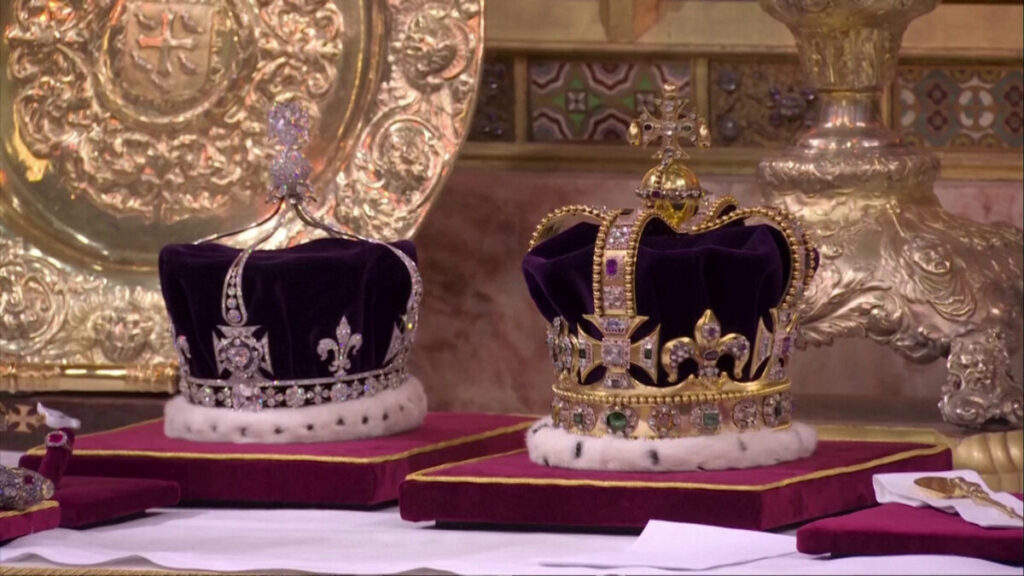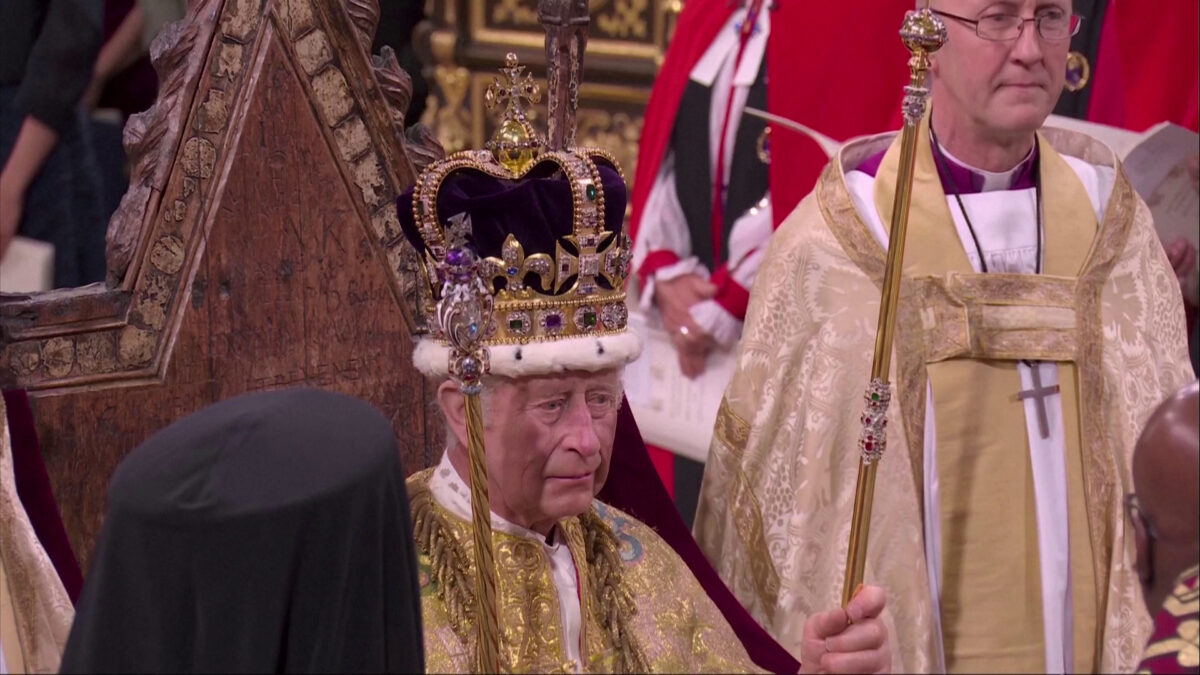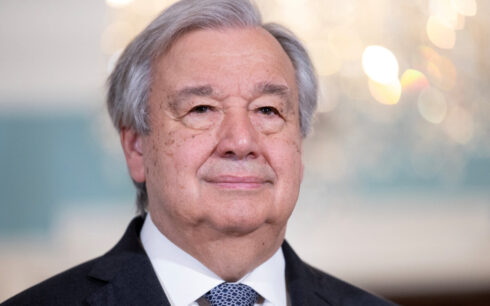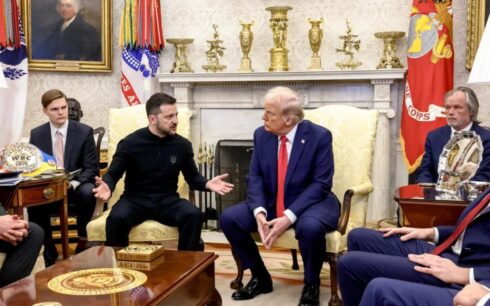World leaders gathered in Westminster Abbey on Saturday for the coronation of King Charles III in what has been billed as Britain’s biggest ceremonial event in seven decades.
The ceremony dates back 1,000 years and drew crowds estimated to be in the tens of thousands, who lined the streets to witness a moment of history.
In front of a congregation of about 100 world leaders and a television audience of millions, the Archbishop of Canterbury, the spiritual leader of the Anglican Church, slowly placed the 360-year-old St Edward’s Crown on Charles’ head as he sat upon a 14th-century throne in Westminster Abbey.
Gun salutes were fired at the Tower of London and across the capital, the nation, in Gibraltar, Bermuda and on ships at sea. “God save King Charles. Long live King Charles. May the king live forever,” the congregation at the abbey said after a trumpet fanfare.
During the historic and solemn two-hour service, which dates back to the time of William the Conqueror in 1066, Charles’ second wife Camilla was also crowned queen.
While rooted in history, the ceremony – televised for only the second time – is also an attempt to present a forward-looking monarchy, with those involved reflecting a more diverse country and all its religions.
With the nation struggling to find its way in the political maelstrom after its exit from the European Union and maintain its standing in a new world order, the monarchy’s supporters say the royal family provides an international draw, a vital diplomatic tool and a means of keeping Britain on the world stage.

“No other country could put on such a dazzling display – the processions, the pageantry, the ceremonies, and street parties,” UK’s Prime Minister Rishi Sunak said.
Saturday’s event was on a smaller scale than that staged for Queen Elizabeth in 1953, but still sought to be spectacular, featuring an array of historical regalia from golden orbs and bejewelled swords to a scepter holding the world’s largest colorless cut diamond.
Charles, 74, automatically succeeded his mother as king on her death last September, and the coronation is not essential but regarded as a means to legitimize the monarch in a public way.
After the service, Charles and Camilla, 75, departed in the four-tonne Gold State Coach built for George III, the last king of Britain’s American colonies, to ride to Buckingham Palace in a one-mile procession of 4,000 military personnel from 39 nations.
Meanwhile hundreds of soldiers in scarlet uniforms and black bearskin hats lined the route along The Mall, the grand boulevard leading to the palace, in what is the largest ceremonial event of its kind in Britain since the coronation of Charles’ mother.

Charles’ second wife Camilla, 75, was also crowned queen during the two-hour ceremony, which while rooted in history, is also an attempt to present a forward-looking monarchy, with those involved in the service reflecting a more diverse Britain and leaders from all faiths.
Tens of thousands of people ignored the pouring rain to mass in a crowd more than 20 deep in some places to watch what some saw as a moment of history.





